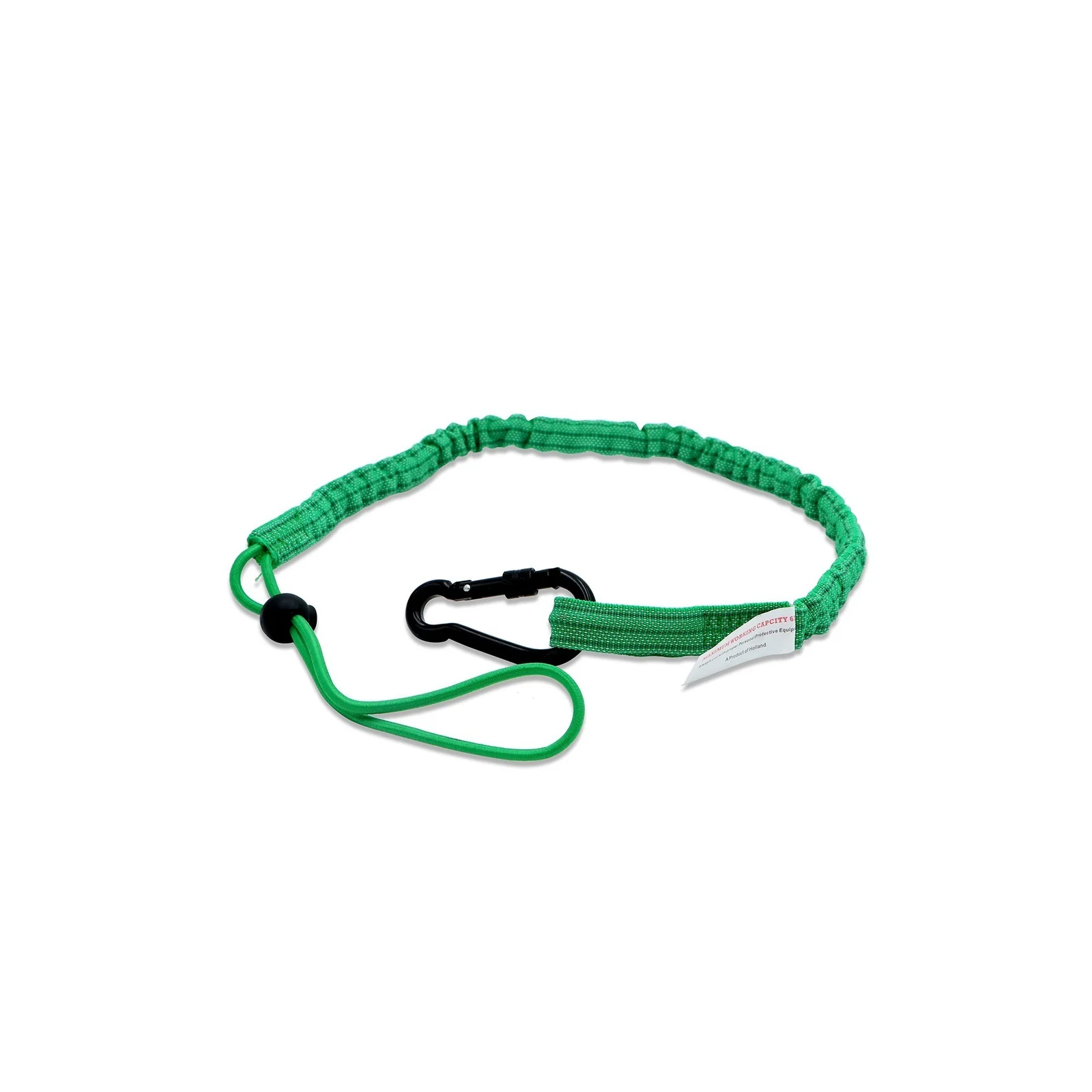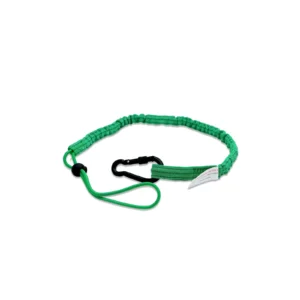Introduction
Are you tired of dropping tools and disrupting your workflow? Looking for a practical solution to improve both efficiency and safety in your workplace? Look no further than the tool lanyard! This ultimate guide will provide you with all the information you need to understand the benefits and best practices of using a tool lanyard. A tool lanyard is a secure and reliable way to prevent dropped tools and potential accidents. By attaching your tools to a lanyard, you eliminate the risk of tools falling from heights and injuring yourself or others. Additionally, a tool lanyard increases efficiency by keeping your most-used tools within arm’s reach at all times, reducing the time wasted searching for misplaced tools. In this comprehensive guide, we will explore the different types of tool lanyards available, highlighting their unique features and advantages. We will also discuss how to properly select, attach, and use a tool lanyard for optimal safety and convenience. Don’t let dropped tools and safety hazards slow you down. With the help of a tool lanyard, you can enhance your productivity and ensure a safer working environment. Let’s dive in and discover the secure and practical world of tool lanyards.
1. What Are Tool Lanyards?
GET IT NOW
Tool lanyards are like safety leashes for your tools. Imagine you’re working at a height, maybe fixing something on a scaffold or a rooftop. You’ve got your trusty hammer or wrench in hand, but oops! Your grip slips, and the tool starts its freefall. Now, here’s where the magic happens: tool lanyards come into play. These clever tethers connect your tools to you or suitable anchor points. So, even if you accidentally drop that hammer, it won’t plummet to the ground below, causing chaos and potential injuries. Think of them as seatbelts for your tools – keeping them close and preventing any unexpected “tool-dives.”
At SafetyLiftinGear, they offer a variety of tool lanyards, including retractable ones, heavy-duty versions, and even power tool lanyards. These little heroes ensure your tools stay put, making your work safer and preventing any accidental tool acrobatics!
If you’re curious about where to anchor these lanyards, they connect to an anchor point – whether it’s your belt, harness, or something sturdy nearby. So, next time you’re up high, remember your trusty tool lanyard – because nobody wants a falling wrench surprise!
2. Benefits of Using Tool Lanyards
Preventing Accidental Drops
- Tool lanyards are designed to secure tools and prevent them from accidentally falling or being dropped. This is crucial in various work environments, especially those involving heights or confined spaces.
- Accidental drops can lead to injuries, damage to equipment, or even pose a risk to others working nearby. By attaching tools to lanyards, workers can significantly reduce this risk.
Efficiency
- Imagine a scenario where a worker needs to use multiple tools throughout the day. Without lanyards, they might spend valuable time searching for misplaced tools or retrieving dropped ones.
- Lanyards allow workers to keep their tools within easy reach. Whether it’s a hammer, wrench, or measuring tape, they can quickly access the required tool without interrupting their workflow.
Equipment Protection
- Tools are valuable assets, and their longevity depends on proper care. Dropping a tool from a height can cause irreparable damage, affecting its functionality and lifespan.
- Tool lanyards prevent tools from hitting the ground. By doing so, they preserve the integrity of the tools, ensuring they remain in good working condition over time.
Compliance
- Safety regulations and guidelines often mandate the use of tool lanyards in specific work scenarios. These regulations aim to protect workers and maintain a safe working environment.
- Additionally, in construction, maintenance, or industrial settings, lanyards are indispensable for compliance with safety standards. Employers must ensure that workers use lanyards to secure their tools properly.
3. Types of Tool Lanyards
There are two main types of tool lanyards:
Restraint Lanyards
- Purpose: Restraint lanyards are primarily used to restrict movement and prevent falls. They are ideal for situations where vertical free falls are not possible.
Applications
- Positioning: Restraint lanyards are commonly used for positioning tasks. Workers can secure themselves in a specific location while working at heights.
- Restraint: These lanyards help prevent accidental falls by limiting the worker’s range of movement.
Features
- Length: Restraint lanyards are typically shorter than fall arrest lanyards.
- Attachment Points: They usually have a single attachment point (such as a snap hook) for connecting to an anchor point or harness.
- Materials: Restraint lanyards are made from durable materials like nylon or polyester webbing.
Fall Arrest Lanyards
- Purpose: Fall arrest lanyards are designed to catch the wearer in case of a fall. They provide a safety net by preventing free falls.
Components
- Dorsal D-Ring: Fall arrest lanyards feature a dorsal D-ring (located on the back) for attaching to a connector (such as a lanyard).
- Additional D-Rings: Some fall arrest lanyards may have extra D-rings for various purposes:
- Worker Positioning: Additional D-rings allow workers to adjust their position while working.
- Travel Restraint: They can be used for travel restraint systems, preventing workers from reaching hazardous areas.
- Retrieval: In emergency situations, these D-rings facilitate rescue and retrieval.
- Ladder Climbing: Some lanyards are suitable for ladder climbing.
- Materials: Fall arrest lanyards are also made from strong materials like nylon or polyester webbing.
4. Tool Lanyards and Safety Harnesses
Fall Arrest Harnesses
- These harnesses are designed to prevent falls by arresting the fall mid-air.
- They feature a dorsal D-ring (located on the back) to which a lanyard can be attached.
- Fall arrest harnesses are the only acceptable form of body support for fall protection.
- When selecting a fall arrest harness, consider the specific job task and work environment.
Ladder Climbing Harnesses
- These harnesses are specifically designed for ladder climbing safety systems.
- They have a front D-ring, which allows for secure attachment while climbing ladders.
- Ladder climbing harnesses ensure stability and prevent falls during ladder ascent or descent.
Work Positioning Harnesses
- Work positioning harnesses are ideal for tasks that require workers to maintain specific positions.
- They feature positioning D-rings on the hips, allowing workers to use both hands freely.
- These harnesses are commonly used in activities like window cleaning, construction, and maintenance.
Confined Space Entry/Retrieval Harnesses
- Designed for confined space work, these harnesses facilitate safe entry and retrieval.
- They allow upright rescue from confined spaces, such as tanks, silos, or manholes.
- Confined space entry/retrieval harnesses are equipped with additional features for rescue scenarios.
Descent and Suspension Harnesses
- These harnesses serve specific purposes related to descent and rigging.
- They are used with descent control devices (e.g., rope descenders) during controlled descents.
- Additionally, they can be employed for rigging purposes, such as securing loads or equipment.
5. Materials Used in Tool Lanyards
When selecting a tool lanyard, it’s essential to consider the material it’s made from. Different materials offer varying levels of durability, flexibility, and resistance. Here are some common materials used for tool lanyards:
1. Nylon Lanyards
Characteristics
- Lightweight: Nylon lanyards won’t weigh you down during work.
- Strength: They are strong and durable, making them suitable for general-purpose use.
- Abrasion Resistance: Nylon lanyards can withstand moderate wear and tear.
- Ideal Use: General-purpose applications where durability and flexibility are essential.
2. Polyester Lanyards
Characteristics
- UV Resistance: Polyester lanyards perform well in outdoor environments with exposure to sunlight.
- Similar to Nylon: They share similarities with nylon but offer better UV protection.
- Ideal Use: Outdoor work settings where sun exposure is common.
3. Kevlar Lanyards
Characteristics
- Exceptional Strength: Kevlar lanyards are incredibly robust.
- Heat Resistance: They can withstand high temperatures, making them suitable for welding or metalworking.
- Ideal Use: High-temperature applications where strength and heat resistance are critical.
4. Bungee Cord Lanyards
Characteristics
- Flexibility: Bungee cord lanyards allow movement without sudden jolts when tools are dropped.
- Strain Reduction: They minimize strain on the user.
- Ideal Use: Situations where flexibility and shock absorption are necessary.
6. Weight Capacity and Tool Attachment
Consider the weight capacity of the lanyard based on the tools you’ll be using. Some key points:
Static Load Capacity
- Definition: Static load capacity refers to the maximum weight a lanyard can hold without breaking when subjected to a constant load.
- Importance: Ensure that the static load capacity of your lanyard exceeds the combined weight of the tools you intend to attach. This prevents any unexpected failures.
- Calculation: If you have multiple tools, add up their weights (including accessories like holsters or pouches). Choose a lanyard with a capacity higher than this total weight.
Dynamic Load Capacity
- Definition: Dynamic load capacity accounts for the force exerted during a fall. If you’re using the lanyard as part of a fall arrest system, this becomes critical.
- Safety Standards: Fall arrest lanyards must meet specific safety standards to protect against sudden impacts. Ensure your lanyard complies with these standards.
- Importance: Having multiple attachment points on your lanyard enhances efficiency and organization.
Benefits
- Versatility: Attach different tools simultaneously.
- Easy Access: Quickly switch between tools without detaching and reattaching.
- Reduced Clutter: Keep your workspace organized.
Attachment Options
- Carabiners: Use carabiners, D-shaped metal clips designed for robust attachment, to secure tools.
- Swivel Hooks: These allow tools to rotate freely without tangling the lanyard. As a result, users can work more efficiently and safely, reducing the risk of accidents.
- Multiple Points: Look for lanyards with several attachment options. This versatility allows users to adapt to various work situations and safety requirements.
7. Proper Usage and Best Practices
To maximize safety and efficiency, follow these guidelines:
Inspect Regularly
- Regular inspections are crucial. Consequently, check lanyards for signs of wear, fraying, or damage. Moreover, look for any cuts, abrasions, or weakened areas. Additionally, inspect connectors, stitching, and other components to ensure they are intact and functioning properly. Ultimately, replace any worn-out lanyards promptly to maintain safety.
Secure Tools Correctly
When attaching tools to the lanyard, follow these steps:
- Use appropriate connectors: Choose connectors that match the tool and lanyard specifications.
- Avoid overloading: Each lanyard has a weight capacity. Do not exceed it.
- Inspect connectors: Ensure you securely fasten them so they won’t come loose during work.
- Properly secured tools prevent accidental drops and protect both workers and bystanders.
Avoid Sharp Edges
Be cautious when working near sharp edges or abrasive surfaces:
- Use abrasion-resistant lanyards: These design to endure wear from rough surfaces.
- Keep the lanyard away from sharp objects to prevent cuts or damage. Additionally, inspect the lanyard after working in such environments to ensure its integrity and continued safety.
Length Matters
Finding the right lanyard length is essential:
- Too short: Restricts movement and can be uncomfortable. However, with proper adjustment and fit, users can mitigate these issues.
- Too long: Increases the risk of tripping or entanglement. Consequently, users must exercise caution to avoid potential hazards.
- Optimal length allows comfortable movement without excessive slack. Furthermore, it ensures that users can maneuver with ease while maintaining safety.
Training and Awareness
Educate workers on lanyard safety:
- Explain proper usage: Train workers on how to attach, secure, and handle lanyards.
- Emphasize entanglement prevention: Workers should be aware of potential hazards.
- Regular reminders: Reinforce safety practices during toolbox talks or safety meetings.


